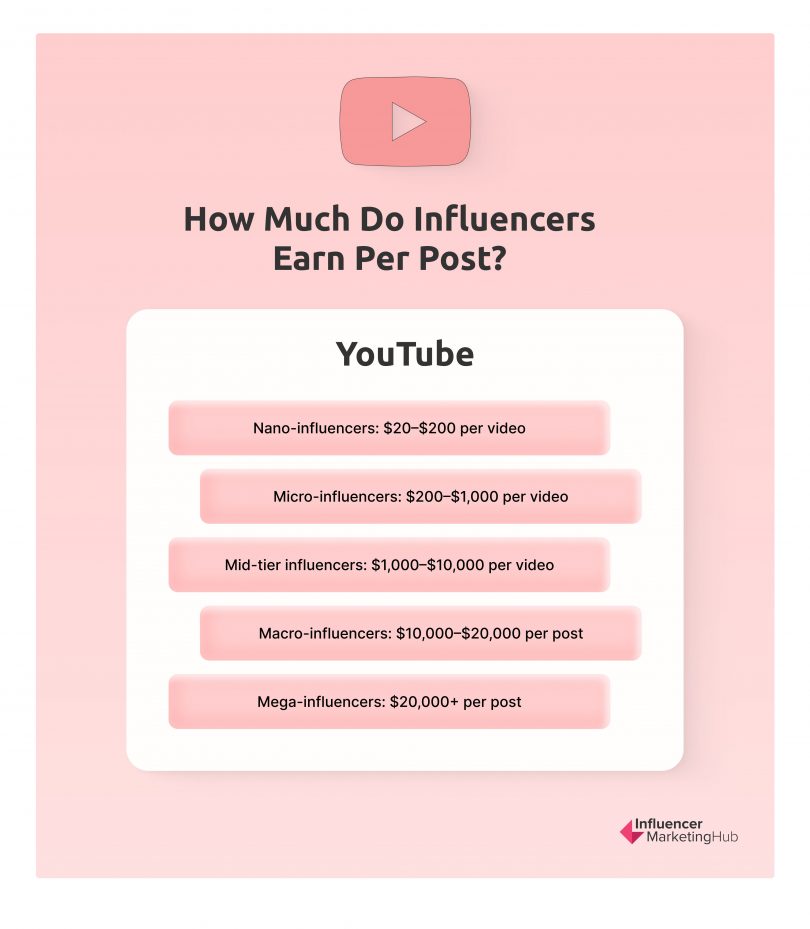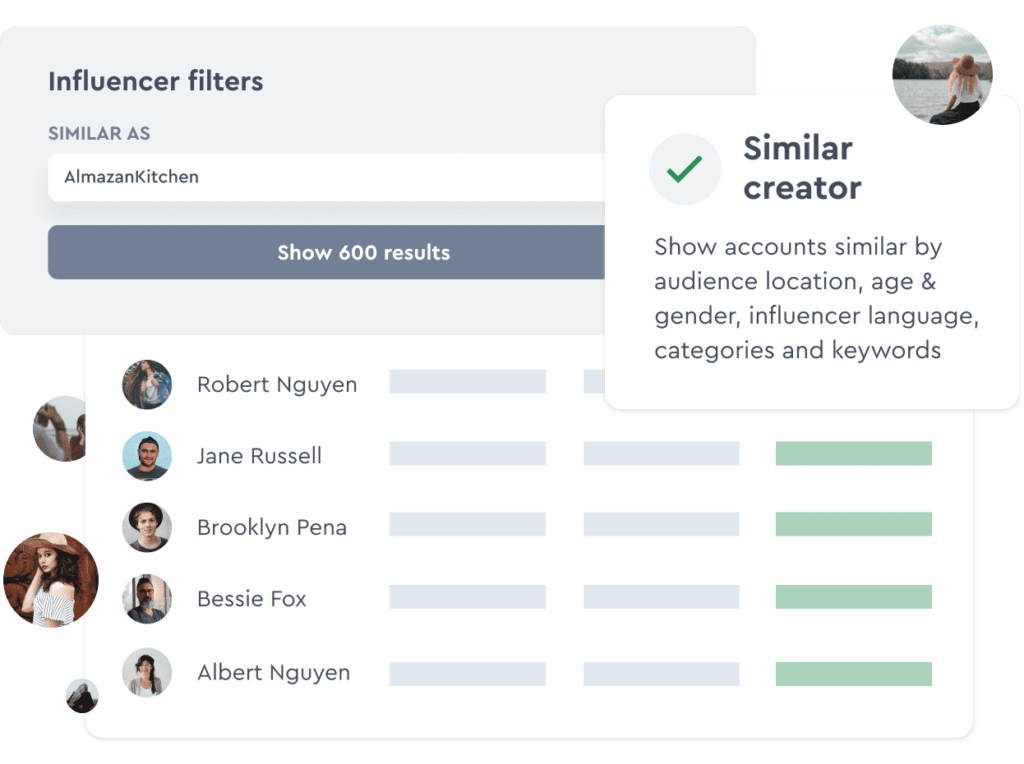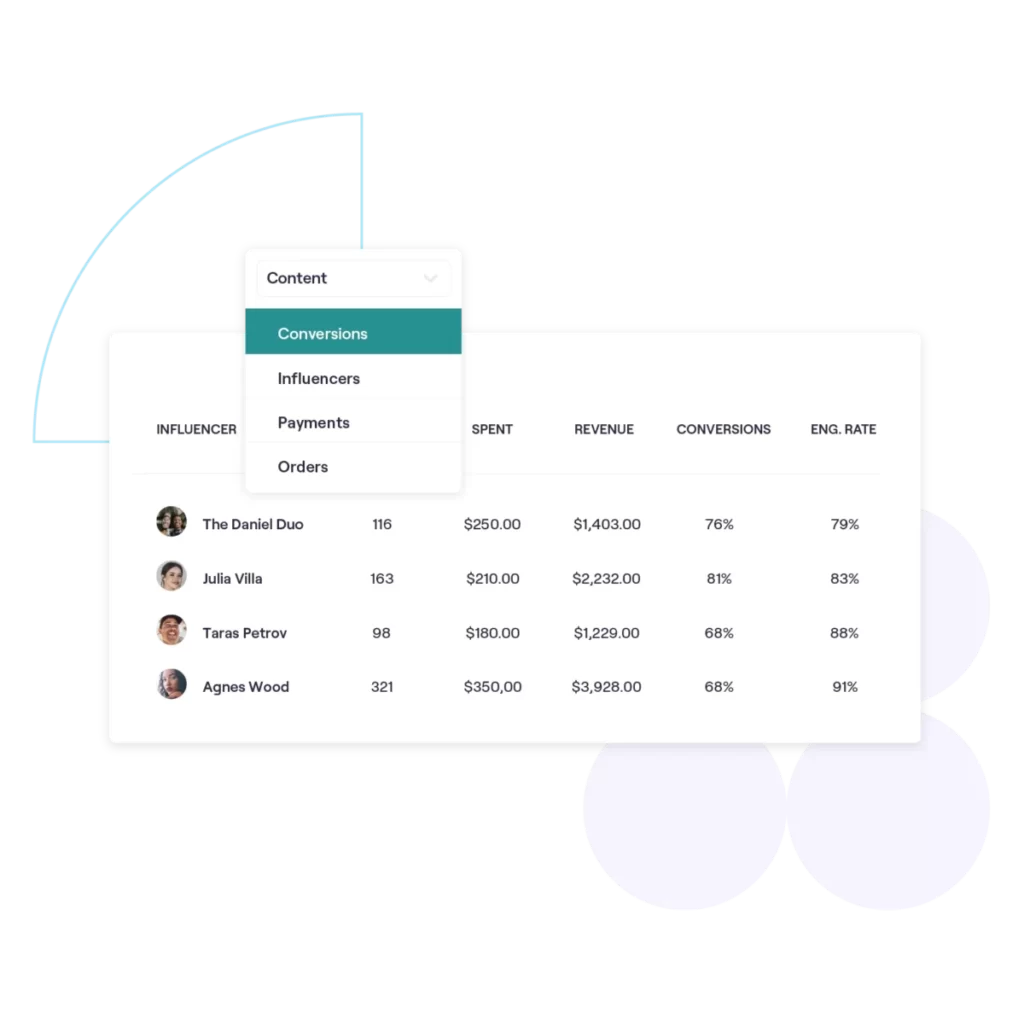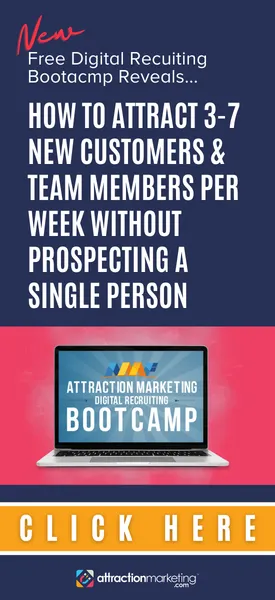As the popularity of influencer marketing grew, the landscape has also evolved at a massive scale. What was once an industry largely focused on bloggers soon shifted its focus to social media influencers and YouTubers. Even then, the initial focus was on influencers with a massive following – typically in the tens of thousands (or even millions). Now in the age of authenticity, brands are embracing micro-influencer marketing to build genuine connections with their audience.
In this micro-influencer marketing guide, we explore what this type of influencer marketing is and how your brand can benefit from it. We also show you some of the ways your brand can work with them and how to create your own strategy. Let’s take a look.
Micro-Influencer Marketing Guide: Benefits and Steps:
What is a Micro-Influencer?
A micro-influencer is a content creator with 10K-100K followers on social media. They have a fairly substantial following while still being relatable to their audience, making them one of the most effective types of influencers to work with.
These influencers tend to specialize in very specific niches, which means that their following is also made up of people who have an interest in those niches. Say a cosplaying micro-influencer will mostly have followers who are interested in anime and superhero fiction. Similarly, a crafting micro-influencer will mostly have followers who are interested in arts and crafts.
For example, check out the following post from an arts and crafts creator who specializes in crochet flowers. You can see people interested to know the brand of yarn they use and how they made the big white flowers.
As such, they’re particularly ideal for influencer marketing campaigns where brands want to target a highly specific niche. For example, a brand that’s introducing a new line of anime merch would want to team up with the cosplaying micro-influencer mentioned above.
Benefits of Working with Micro-Influencers
Although we briefly touched on the benefits of working with micro-influencers above, let’s give you a more detailed breakdown. Here are some of the main reasons why you should work with micro-influencers.
Cost-Effectiveness
One of the main reasons that make micro-influencers so appealing to brands is the cost factor. Although the specific rates may vary based on following size, content type, and platform, they still don’t charge as much as largescale influencers.
According to our latest report on influencer rates, micro-influencers charge between $100 and $500 per Instagram post. Meanwhile, you can expect to spend upwards of $5,000 for a single post by macro-influencers and mega-influencers.
On TikTok, the average rate for micro-influencers is $25-$125 per post. Even on YouTube, where influencer rates tend to be highest due to the nature of content, you typically won’t spend more than $1,000 per video if you work with a micro-influential creator.

Higher Engagement Rates
Another major benefit of working with micro-influencers is their ability to garner high levels of engagement. This is particularly important at a time when engagement rates are dropping across the board on platforms like Instagram.
A Later study found that micro-influencers still manage to generate a 2% engagement rate for both regular and sponsored posts on Instagram. Meanwhile, mid-tier influencers and macro-influencers see an engagement rate of 1.5% and 1.2% respectively for sponsored posts.
Even on TikTok, where larger accounts still see high levels of engagement, micro-influencers manage to garner some of the highest engagement rates. Their engagement rate stood at an average of 12.4%, according to Statista. Meanwhile, our Influencer Marketing Benchmark Report found that large accounts boasting over a million followers had an engagement rate of 10.53%.
Niche Audience Targeting
A key contributor to these high engagement rates is the ability to reach a targeted niche audience. Since micro-influencers focus on a few specific niches, they manage to build a strong community of followers who share the same interests.
This makes them a highly effective option for brands that want to target a niche audience. You get the assurance that even though they don’t have millions of followers, the followers that you do manage to reach will be highly relevant to your brand.
For example, the following TikTok influencer, Lupita (@luwhatwear), has managed to build a following of almost 12K followers by creating beauty and skincare content. She regularly creates videos showcasing her makeup expertise and documenting her life as a Sephora manager.
@luwhatwear
Authentic Conversations
As a result of showing their keen interest in specific topics, micro-influencers also have the ability to generate authentic conversations. They regularly have followers asking about the products they feature or how to do certain things, which opens up the opportunity to organically share brand or product-related information.
For example, the following cosplay influencer, Eva (@punderfullll) shared a short video clip of her dressing up as a certain character while carrying a plush figure of the same character. You can see plenty of comments asking about the plush figure, with one comment asking about the size. The influencer responded to the comment and explained that it’s a new size offered by the brand selling the figure.
How to Work with Micro-Influencers: Brand Examples
The benefits we highlighted above might be enough to convince you to get started with micro-influencer marketing. But you might not be sure exactly how micro-influencers can help promote your brand. So here are a few brand examples of micro-influencer marketing to inspire you.
Creative Collaborations
With creativity on their side, micro-influencers are perfect for collaborations that involve creating new products or collections. Engage relevant micro-influencers to help you brand come up with fresh ideas and designs that would appeal to your target audience. This may involve producing a capsule collection with the influencer contributing their designs, for example.
For Christmas 2023, Laika Studios partnered with micro-influencer Rachel (@spookythankfulmerry), who has amassed over 30K Instagram followers for her Halloween-related products. The influencer helped design a Coraline-themed Christmas tree to promote the studio’s new Coraline ornament.
She posted a close-up photo of the ornament along with a full photo of the tree she designed to make the announcement. Comments flooded in raving about how much they loved the tree, with many asking her to do a tutorial on how she created the tree.
Ambassador Programs
With their ability to engage a relevant audience made up of people who share the same interests as them, micro-influencers can be excellent ambassadors for your brand. They lend an authentic voice to brand promotions, especially when it comes to brands that they love.
So consider activating them in your ambassador programs to effectively promote your products. Ideally, look for micro-influencers who are already talking about your brand to make these partnerships even more authentic.
For example, thredUP activated the following TikTok micro-influencer, Lilly (@washedawayapparel) for an ambassador program. Since the influencer already creates tons of content about thrifting, the partnership makes sense and allows the brand to reach the right audience.
@washedawayapparel My new favorite pants ?? #ootd #thredupambassador @thredUP @Free People ♬ original sound – Lilly
Influencer Gifting
As mentioned earlier, micro-influencer marketing is cost-effective. Not only do micro-influencers charge less for their social media posts, but some may even create organic posts to share the gifts they received from brands. You could have influencer gifting campaigns where you send out gifts to micro-influencers and have them review or share the products with their followers.
For example, YSL Beauty sent the following micro-influencer, Cristina (@cristinaviseu) one of their beauty advent calendars. The influencer created an Instagram Reel to give her followers a sneak peek of what’s inside. Many of the comments talked about how much they loved it, with some even commenting that the high price ($400) might be worth it if those are the kinds of products included in the calendar.
Steps to Create Your Micro-Influencer Marketing Strategy
Now that you have the ideas and inspiration, it’s time to look into the actual process. Follow the steps below to create your first micro-influencer marketing strategy.
Step 1: Set Your Goals and Objectives
Start with a solid idea of the goals that you wish to achieve through micro-influencer marketing. This is necessary to understand the types of content you need and measure how your campaign is performing.
Some of the common influencer marketing goals include driving brand awareness, generating sales, attracting new followers, and boosting brand mentions. Many brands have ongoing micro-influencer campaigns with the general goal to either drive brand awareness or sales. You may also create campaigns around specific events such as a product launch, for example.
Step 2: Decide on Content Types
Next, figure out what types of content will be best at helping you achieve your goals. This is one of the most crucial steps that can determine the success of your micro-influencer marketing campaign.
Do you want micro-influencers reviewing your products in-depth? Do you want them to take their followers on a tour across your new store? Or perhaps you need them to create more in-depth tutorial videos that help others learn how to use your products. Some brands may also have influencers simply featuring their products in a product placement photo.
You could even create Collab posts à la Gorton Seafood when they partnered with Chris Honda (@lifewithchrishonda). The food micro-influencer created a short Instagram Reel featuring a holiday shrimp appetizer idea and using the brand’s shrimp.
Step 3: Choose Your Platform(s)
The next step is to decide on the best social media platforms to focus on for your campaign. Instagram, TikTok, and YouTube are some of the most popular platforms used in micro-influencer marketing. But the right platform for you largely depends on the types of audience you want to reach and the platforms they use. For example, a Gen-Z audience may be more effectively reached through TikTok.
Your platform choice also depends on the types of content you want to focus on for this campaign. For example, if you’re looking to leverage in-depth videos, you may want to work with micro-influencers on YouTube.
Step 4: Find the Right Micro-Influencers
Next, you’ll need to look for influencers who can help you achieve the goals you’ve outlined above through the platforms you want to use. Use keywords to look for influencers relevant to your niche who will be able to effectively reach the types of people you want to target. Then look through their content to check how good they are at creating the types of content you want.
While you can conduct a search for free through the respective social networks, the process can be extremely inefficient and time-consuming. You can still find free influencer marketing tools that help you conduct influencer searches more effectively. These tools will let you search for micro-influencers using keywords, follower count, and other relevant filters. Some platforms like HypeAuditor even provide tools to help you find creators similar to the micro-influencers you like.

Source: hypeauditor.com
Step 5: Craft a Compelling Brand Story
Since micro-influencer marketing is all about establishing connections, it’s important to craft a compelling story so that people can connect with your brand. This story can then be shared by the influencers when they talk about your brand and its products or services with their followers.
What’s the one story that defines your brand? How did your brand begin in the first place and what was the big motivator behind its inception? Make sure to use this story consistently in your micro-influencer campaigns (and the rest of your brand messaging).
Step 6: Track and Measure Your Campaign
Once your campaign goes live, it’s crucial that you track it to measure its effectiveness. Are the influencers driving the kinds of visibility and engagements you expected? Which influencers seem to be particularly successful and which ones aren’t doing so well?
You can make use of influencer marketing platforms with analytics capabilities to monitor your campaign performance in real time. These platforms will help you monitor influencer performance at the post level to understand reach, impressions, engagements, and more. So you can pivot and optimize your campaign accordingly.
Platforms like Grin even help you track conversions generated by each influencer. This allows you to measure the revenue generated in comparison to the amount spent and assess their value in terms of real business outcomes.

Source: grin.co
The Value of Micro-Influencers
Speaking of the monetary value of micro-influencers, let’s take a look at a few standout case studies to better understand the outcome that these influencers are capable of generating.
- Cuts Clothing launched a product seeding campaign involving 15 micro-influencers. The campaign generated 30+ original TikTok videos that garnered an engagement rate of more than 10% with a CPA of less than $120.
- Halva, a Finnish candy brand, worked with 99 local micro-influencers and managed to reach 380,000+ people. The brand spent 1014€ and gained 6852 new followers, meaning that they only spent 0,15€ for each new follower.
- Soylent leveraged micro-influencers to power their content calendar and effectively drive brand awareness. These influencers helped them produce 35+ reusable content assets garnering more than 5 million impressions.
Start Your Micro-Influencer Campaign
Ready to get started with micro-influencer marketing? Make the most of the steps and ideas outlined above to create your first micro-influencer campaign. You can also check out our guide on how to create a successful micro-influencer marketing campaign.
Frequently Asked Questions
What are the facts about micro-influencers?
The facts about micro-influencers are that they charge less, have higher engagement rates, and have a niche audience.
What are the benefits of micro-influencer marketing?
Micro-influencer marketing helps you reach a niche audience more cost-effectively while driving high levels of engagement.
What is influencer marketing guide?
An influencer marketing guide is a guide laying out the facts and details about influencer marketing, often providing step-by-step instructions on how to get started.
What is the criteria for a micro-influencer?
A micro-influencer is someone who creates content and has at least 10K followers but no more than 100K followers.














Leave a Reply